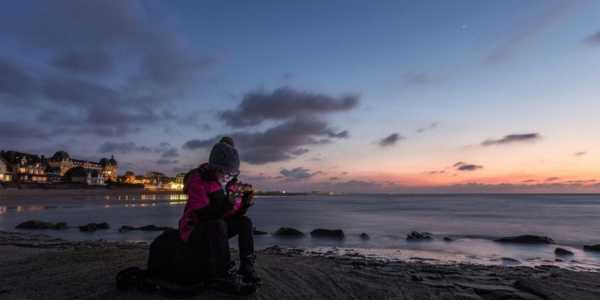The Influence of Social Media on Travel Choices
The role of social media in shaping various aspects of our lives cannot be overstated. Among its many influences, social media travel influence stands out as a significant force driving people's travel decisions and preferences. From discovering new destinations to planning itineraries, social media travel influence has revolutionized the way we experience the world.
This article aims to explore the profound impact of social media on travel choices, exploring how travel decisions on social media are made and the social media travel trends that shape these decisions.
The Rise of Social Media as a Travel Inspiration
Social media platforms have become virtual travel brochures, offering a plethora of visually captivating content that sparks wanderlust. With the rise of Instagram, Pinterest, TikTok, and other platforms, travelers now have access to a constant stream of breathtaking images and videos that showcase exotic destinations and hidden gems. This visual appeal is a significant component of social media travel influence. Travelers are increasingly turning to these platforms to discover new places, find travel inspiration, and even plan their trips.
The role of influencers and content creators cannot be ignored in this context. Influencers, with their carefully curated feeds and engaging content, have a significant impact on their followers' travel decisions on social media. They provide authentic insights, personal experiences, and recommendations that resonate with their audience. The allure of experiencing a destination through the eyes of a trusted influencer adds to the social media travel influence, making it a potent tool for destination marketing.
The Impact on Travel Choices
The power of social media travel influence lies in its ability to create desire and urgency. When users see picturesque landscapes, luxurious resorts, or unique cultural experiences on their feeds, they are often compelled to add these destinations to their travel bucket lists. This phenomenon, known as "FOMO" (Fear of Missing Out), plays an important role in shaping travel decisions on social media. Travelers don't want to miss out on the trending destinations and experiences they see online, leading them to prioritize these places when planning their trips.

Moreover, social media travel trends often dictate the type of experiences travelers seek. For instance, the growing trend of sustainable travel, adventure tourism, or wellness retreats can be traced back to popular hashtags, viral posts, and influencer endorsements. As travelers consume content related to these trends, they become more inclined to explore similar experiences, further solidifying the social media travel influence on their choices.
Planning and Booking: The Role of Social Media
The influence of social media extends beyond inspiration and into the practical aspects of travel planning and booking. Many travelers use platforms like Instagram and Pinterest as visual search engines to explore potential destinations, accommodations, and activities. The ease of accessing real-time reviews, photos, and videos contributes significantly to travel decisions on social media.
Furthermore, the use of hashtags and geotags allows travelers to find user-generated content related to specific locations, providing a more authentic glimpse into what a place has to offer. This authenticity is a key factor in social media travel influence, as it helps travelers make informed decisions.
Social media also plays a role in the booking process. Many travel companies and services have integrated booking features directly into their social media profiles, making it convenient for users to book flights, accommodations, and tours without leaving the platform. This seamless integration of discovery and booking enhances travel decisions on social media by streamlining the process and providing instant gratification.
The Evolution of Social Media Travel Trends
Social media travel trends are constantly evolving, influenced by changes in technology, consumer behavior, and global events. In recent years, we have seen a rise in trends such as virtual travel experiences, road trips, and staycations, largely driven by the COVID-19 pandemic. As international travel was restricted, travelers sought alternative ways to satisfy their wanderlust, leading to a surge in content promoting local travel and remote destinations.
Another notable trend is the emphasis on personalized travel experiences. Social media algorithms, driven by user preferences and interactions, tailor content to individual tastes. This customization allows travelers to discover niche destinations and unique experiences that align with their interests, further amplifying the social media travel influence.

In addition, the trend of "bleisure" (business + leisure) travel has gained traction, with more professionals blending work and leisure trips. Social media platforms showcase how travelers can balance work commitments with exploring new destinations, making travel decisions on social media more diverse and dynamic.
The Challenges and Limitations
While the social media travel influence has undoubtedly transformed the travel industry, it is not without its challenges. One of the primary concerns is the perpetuation of unrealistic expectations. The highly curated nature of social media content can create a skewed perception of destinations, leading travelers to expect a perfect experience. When reality falls short of these expectations, it can result in disappointment and dissatisfaction.
Additionally, the emphasis on capturing the perfect photo or video can sometimes overshadow the authentic travel experience. The pressure to create shareable content can detract from the joy of exploring a new place, as travelers may prioritize documenting their journey over immersing themselves in the moment. This phenomenon, known as "social media fatigue," is a growing concern among travelers and influencers alike.
Furthermore, the rapid dissemination of social media travel trends can lead to overcrowding and over-tourism in certain destinations. The popularity of "Instagrammable" spots can result in a surge of visitors, putting pressure on local communities and ecosystems. It highlights the need for responsible travel practices and conscious consumption of travel content.
Conclusion
The social media travel influence is a powerful force that shapes how people discover, plan, and experience travel. From inspiring wanderlust to facilitating the booking process, social media platforms have become indispensable tools for modern travelers. The impact of travel decisions on social media is evident in the way travelers seek out trendy destinations, personalized experiences, and authentic recommendations. As social media travel trends continue to evolve, the industry must adapt to the changing landscape while promoting responsible and sustainable travel practices.
As travelers, it's vital to recognize the influence of social media and approach it with a critical eye. While it offers a wealth of information and inspiration, it's important to balance online content with real-world experiences. By doing so, we can make informed travel decisions on social media that lead to meaningful and memorable journeys.